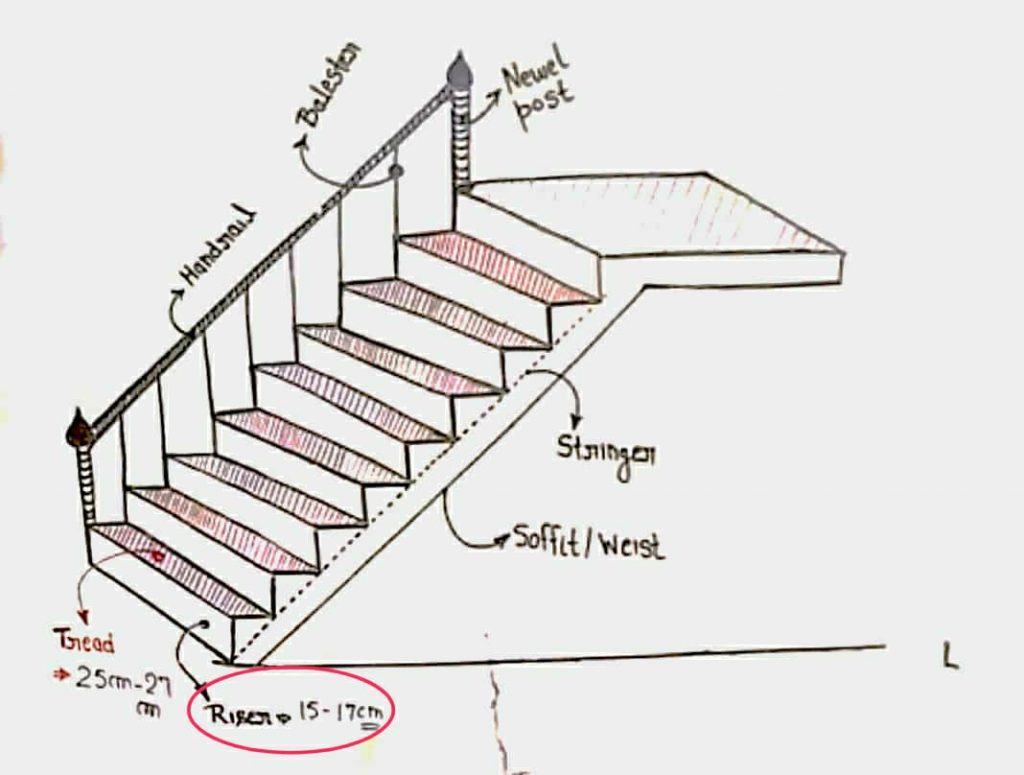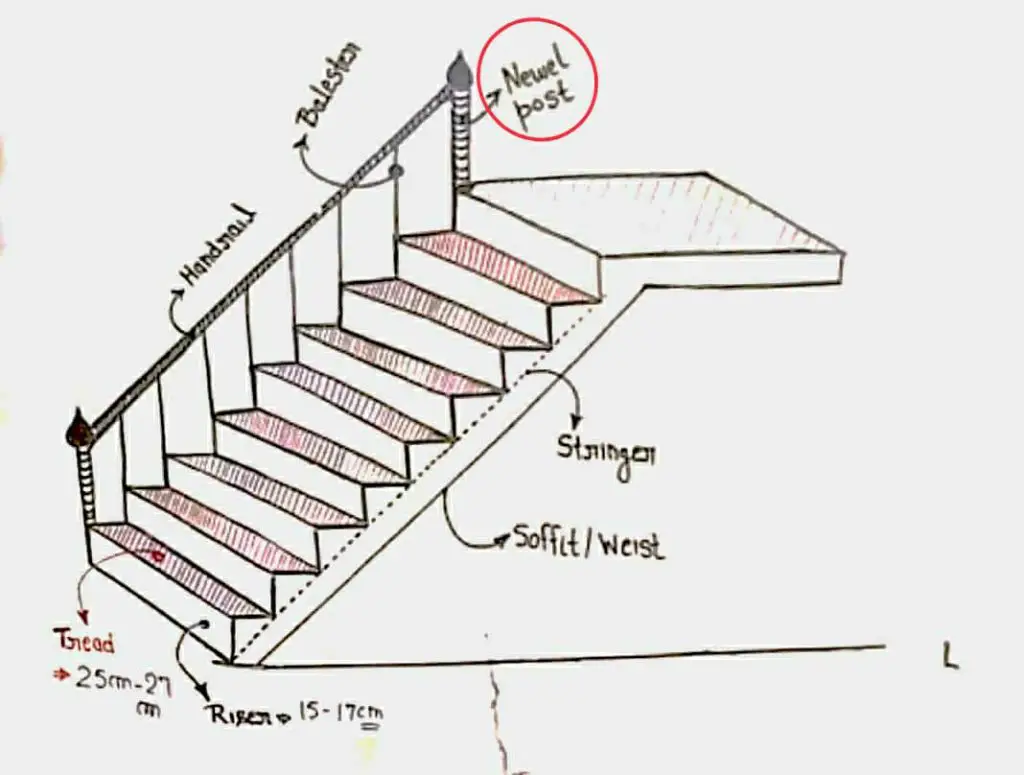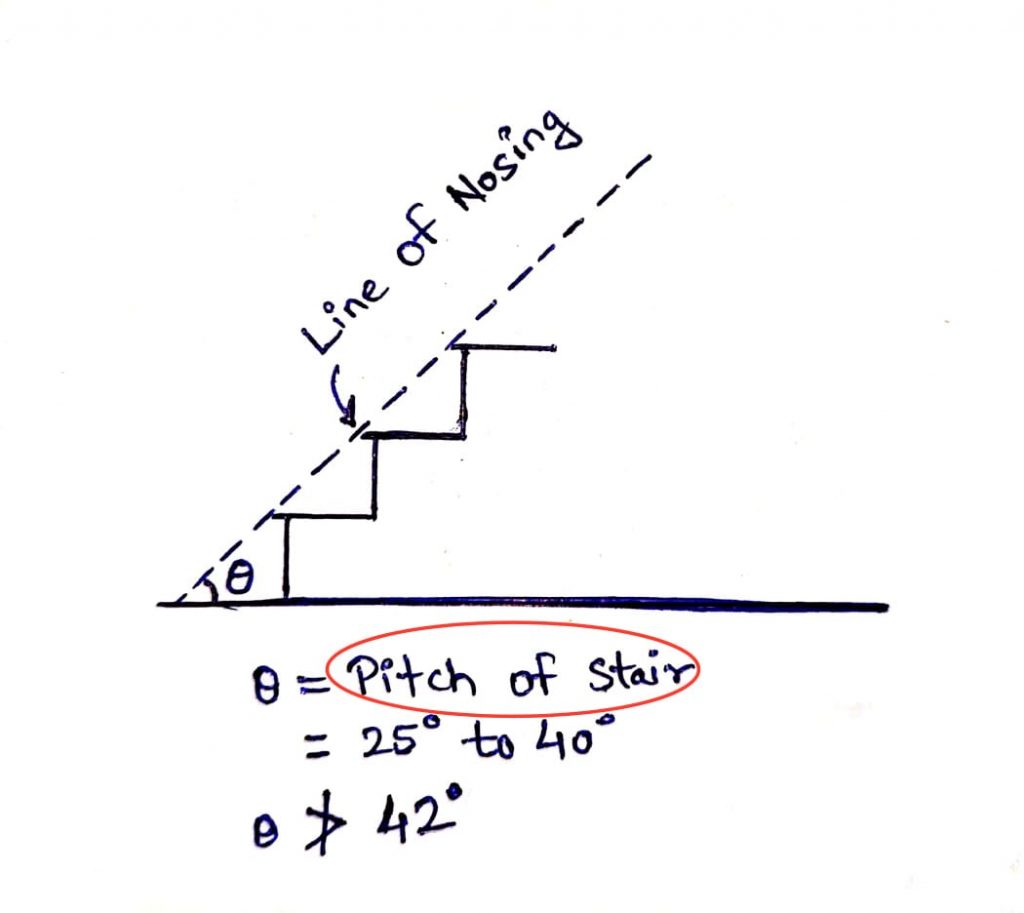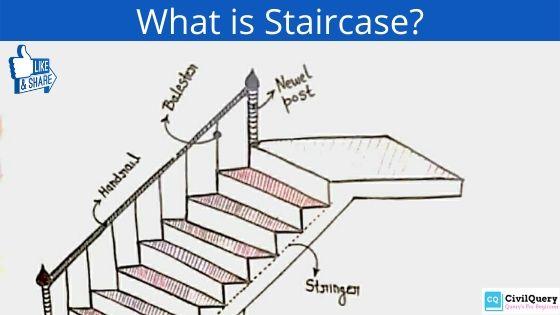What is Staircase?
A staircase is the part of a building that helps us to move from one floor to another. It is a very important part of a building. For different types of building the sizes of the stairs differ.
Step – A combination of 1 riser and 1 tread is known as a step.
Parts of stairs & Standard sizes.
- Riser.
- Tread.
- Newel Post.
- Balester.
- Hand Rail.
- Flight.
- Balestraint.
- Walking Line or Right of Stair.
- Nosing.
- Line of Nosing.
- Pitch Of Stair.
- Headroom.
- Landing.
- Winders.
- Kite Winders.
- Stringer.
- Soffit or Weist.
1. Raiser

The riser is the part of a staircase which helps us to displace vertically. It is a vertical component of steps. The standard size of a riser is 15 cm to 17 cms.
2. Tread

2. Tread – It is that part of a staircase which helps us to displace horizontally. It is a horizontal component of steps. The standard size of a riser is 25 cm to 27 cms.
3. Newel Post

3. Newel Post – These are the vertical columns or posts constructed at the first step and the last step of the flight, these posts are known as newel posts. The standard height of a newel post is 75 cm to 90 cms.
4. Balester

4. Balester – These are the vertical supports provided at all steps of the flight to support the handrail.
5. Hand Rail

5. Hand Rail – It is a hand railing provided in every staircase to hold while climbing stairs.
6. Flight

6. Flight – Flight is known as a group of steps from floor level to the mid-landing and from mid-landing to the next floor. These two flights are also named as flight 1 and flight 2. A flight must be a minimum of 3 steps and a maximum of 12 steps.
7. Balestraint
7. Balestraint – A group of newel posts, balusters, and handrails are known as balestraints.
8. Walking Line or Right of Stair

8. Walking Line or Right of Stair – It is the width covered by one person while moving on a staircase. This width is known as a walking line or right of a stair. This width is considered around 45 cms.
9. Nosing
9. Nosing – It is the horizontal elevated portion at the top of the step. This nosing is generally around 1cm to 2 cms.
10. Line of Nosing

10. Line of Nosing – It is an imaginary line generated by touching every nosing of every step. This line is known as the line of nosing.
11. Pitch of Stair

11. Pitch of Stair – The angle created by the line of nosing with the horizontal is known as the pitch of a stair. This angle is denoted by ( ϴ = Theta ). This angle must be 25° to 40° but it should not be more than 42°.
12. Headroom
12. Headroom – It is the distance between the line of nosing to the upper flight. This distance is known as the headroom. This distance, in any case, must not be less than 2 meters.
13. Landing
13. Landing – It is the platform provided in the stair to change the direction from the first flight to the second flight.
14. Winders
14. Winders – These are the type of steps whose width of one side is less than the other side. These are also used to change the direction in the staircase without any landing. These steps are triangular in shape.
15. Kite Winders
15. Kite Winders – If the winders are consisting of 3 or 5 steps then the middle step i.e. 2nd and 3rd step respectively is known as kite winder.
16. Stringer
16. Stringer – The beam supporting every step is known as a stringer beam and the imaginary line passing by touching the bottom of every step is known as stinger line.
17. Soffit or Waist
17. Soffit or Waist – The bottom portion of the flight is known as the soffit or waist.
2. Parameters Of Stairs:
1. R + T = 15 + 25 = 40 ( Generally, 40 to 45 cm )
2. R x T = 15 x 25 = 375 ( Generally, 375 to 450 cm )
3. 2R + T = 2(15) + 25 = 55 ( Generally, 55 to 65 cm )


I found this materials very much useful and educative, they really help me on my research as an architectural student. i will be please to contact this website for any further research.